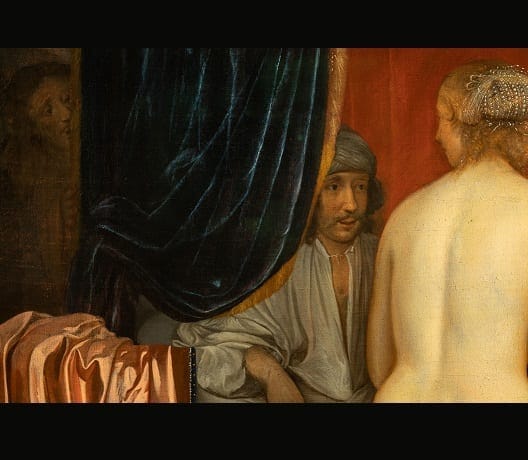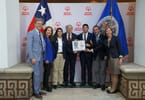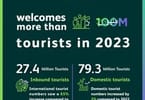- There is always a dialogue that is established between the work of art and its viewer.
- Viewers cross the border that separates our world from that of the painting.
- The erotic and ambiguous dimension of the relationship between image and gaze is finally revealed.
The reopening of museums in most of the Italian territory bringing back art and tourism has opened a glimmer of light and hope during the long and troubled period of the COVID-19 pandemic still in progress. It is an opportunity for moral and spiritual relief for Italian and foreign art lovers who have been forced for months to dream of regaining a part of their lost freedom.
Art gives back to life, and the exhibition of the Barberini Corsini National Galleries curated by Michele Di Monte showed this with the flow of visitors attracted by the intriguing appeal of “How images use us” – an enigma in 25 masterpieces of painting that date between the sixteenth and eighteenth centuries.
“The exhibition,” says Flaminia Gennari Santori, Director of the Museum, “deepens the knowledge of the works in the collection with a valuable contribution, once again enhancing the policy of exchanges with other museums aimed at strengthening the key role played by the galleries at [the] national and international level.”
Some works from the collection of the national galleries, are loans from important museums, including the National Gallery in London, the Prado Museum in Madrid, the Rijksmuseum in Amsterdam, the Royal Castle in Warsaw, the di Capodimonte in Naples, the Uffizi Gallery in Florence, and the Savoy Gallery in Turin.
In a path that winds through 25 masterpieces, the exhibition aims to explore the forms of that tacit dialogue that is always established between the work of art and its viewer as they are elaborated in paintings.
If art is always addressed to an audience, this appeal is never limited to a simple look but requires more active participation and collaboration.
After an allusive introduction to the theme of the exhibition, with the exhibition of Giandomenico Tiepolo’s masterpiece from the Prado Museum, “Il Mondo Novo,” the exhibition is divided into 5 sections.
In the first sector, “The threshold,” windows, frames, and curtains invite us to cross the border that separates our world from that of the painting; as happens in the fascinating “Girl in a Frame” by Rembrandt, coming from the Royal Castle in Warsaw which seems to await us beyond the image.
This tacit invitation becomes explicit in the next section, “The appeal,” where works such as the portrait “Sofonisba Anguissola” of the poet Giovan Battista Caselli, “Venus, Mars and Love” by Guercino, or “La Carità” ( the Charity) by Bartolomeo Schedoni are openly addressed to the viewer and demand your attention.
In the 2 central sections, “The indiscreet” and “The accomplice,” the observer’s involvement becomes more subtle, allusive, secretive, and even embarrassing. The spectator is called to take a stand on what he sees, and which in some cases he should not even see, as in Simon Vouet’s winking “Good luck,” Johann Liss’s seductive “Judith and Holofernes,” or in “Drunkenness of Noah” by Andrea Sacchi.
The exhibition concludes with the section dedicated to “Voyeur” in which the erotic and ambiguous dimension of the relationship between image and gaze is finally revealed. In the paintings of “Lavinia Fontana,” van der Neer or Subleyras, the voyeur, looks not only at the object of his alleged desire but also discovers the very act of his looking, his being fully a spectator.
Here’s to beating koronavirusa and bringing art, travel, and living itself back to life.
#rebuildingtravel
ŠTA UZIMATI IZ OVOG ČLANKA:
- Some works from the collection of the national galleries, are loans from important museums, including the National Gallery in London, the Prado Museum in Madrid, the Rijksmuseum in Amsterdam, the Royal Castle in Warsaw, the di Capodimonte in Naples, the Uffizi Gallery in Florence, and the Savoy Gallery in Turin.
- “The exhibition,” says Flaminia Gennari Santori, Director of the Museum, “deepens the knowledge of the works in the collection with a valuable contribution, once again enhancing the policy of exchanges with other museums aimed at strengthening the key role played by the galleries at [the] national and international level.
- The reopening of museums in most of the Italian territory bringing back art and tourism has opened a glimmer of light and hope during the long and troubled period of the COVID-19 pandemic still in progress.























